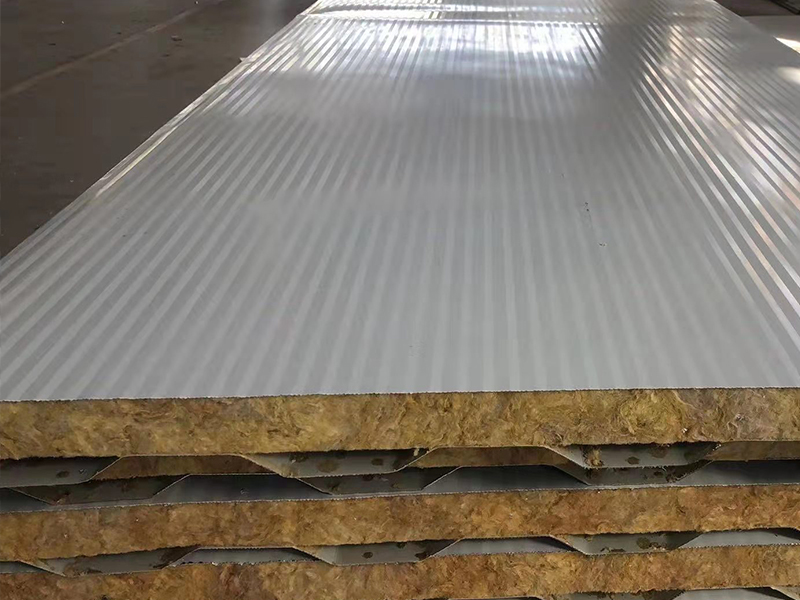产品推荐
RECOMMEND新闻推荐
NEWS RECOMMENDATION冷轧方管与热轧方管主要区别有哪些?
发布时间:2024-01-08 来源:http://www.jnhxtcg.com/
1、冷扎成型钢容许横截面发生部分弯曲,进而充分利用了构件弯曲之后的承载能力;而热轧圆钢不可以横截面产生部分弯曲。
1. Cold rolled formed steel allows for partial bending of the cross-section, thereby fully utilizing the load-bearing capacity of the component after bending; Hot rolled round steel cannot produce partial bending of the cross-section.
2、热扎型钢和冷扎型钢剩下地应力形成的原因不一样,因此横截面里的遍布也有很大差异。冷弯薄壁型钢横截面里的剩下温度分布是弯折型,而热轧板型钢或焊接型钢横截面上剩下温度分布是膜型。
2. The reasons for the formation of residual stress in hot-rolled steel and cold-rolled steel are different, so there are also significant differences in the distribution of stress in the cross-section. The remaining temperature distribution in the cross-section of cold-formed thin-walled steel is bending type, while the remaining temperature distribution on the cross-section of hot-rolled plate or welded steel is membrane type.
3、热扎型钢的权利弯曲刚度比冷扎型钢高,因此热扎型钢的抗扭转特性明显优于冷扎型钢一.热扎
3. The bending stiffness of hot-rolled steel is higher than that of cold-rolled steel, so the torsional resistance of hot-rolled steel is significantly better than that of cold-rolled steel
优势:可以破坏铸钢件的铸造组织,优化钢板的晶体,并消除金相组织的不足,从而使得建筑钢材机构密实度,物理性能有所改善。这些改进关键表述在沿轧制方向上,从而使得建筑钢材在一定程度上再也不是各向异性体;浇筑时所形成的汽泡、裂纹和松散,还可在高温环境压力作用下被焊合。

Advantages: It can destroy the casting structure of steel castings, optimize the crystal structure of steel plates, and eliminate the shortcomings of metallographic structure, thereby improving the compactness and physical properties of building steel structures. These key improvements are expressed along the rolling direction, so that construction steel is no longer anisotropic to a certain extent; The bubbles, cracks, and looseness formed during pouring can also be welded under high temperature and pressure.
缺陷:1.通过热扎以后,建筑钢材内部非金属夹杂(通常是硫酸盐和金属氧化物,也有铝硅酸盐)被卷成片状,发生分层次(隔层)状况。分段使材料沿壁厚方位受弯性能大大的恶变,而且可能会在焊接收缩时发生固层撕破。焊接收拢引发的部分应变力常常抵达屈服极限应变的多倍,比承载力所引起的应变力大很多;2.不匀制冷所造成的剩下地应力。剩下地应力要在并没有外力的作用下里面自相态的地应力,各种各样截面的热扎型钢都是有这种剩下地应力,一-般型钢断面尺寸越多,剩下地应力也就越大。剩下地应力虽是自相态的,――但是对钢结构构件在外力的作用中的性能还是有一定影响。比如对变型、可靠性、缓解疲劳等方面均可能会产生有害的功效。
Defect: 1. After hot stamping, non-metallic inclusions (usually sulfates and metal oxides, as well as aluminosilicates) inside the building steel are rolled into sheets, resulting in a layered (interlayer) condition. Segmentation greatly deteriorates the bending performance of the material along the wall thickness direction, and may cause tearing of the solid layer during welding shrinkage. The partial strain force caused by welding closure often reaches multiple times the yield limit strain, which is much greater than the strain force caused by bearing capacity; 2. The remaining ground stress caused by uneven cooling. The remaining ground stress needs to be in its own phase without the action of external forces. Various types of hot-rolled steel sections have this kind of remaining ground stress, and the larger the cross-sectional size of a general steel, the greater the remaining ground stress. Although the remaining geostress is self phase, it still has a certain impact on the performance of steel structural components under external forces. For example, it may have harmful effects on deformation, reliability, and fatigue relief.
二..冷扎就是指常温下,通过冷拔、冷拔、冷拉等冷加工把钢板或钢链制作成各种各样型式的建筑钢材。优势:成形速度更快、产量大,且不损害镀层,可以制作各种各样的横截面方式,以满足适用范围的需求;热轧能使建筑钢材产生巨大的形状变化,从而提高钢板的屈服极限。
2、 Cold drawing refers to the production of various types of building steel from steel plates or steel chains through cold processing such as cold drawing, cold drawing, and cold drawing at room temperature. Advantages: Faster forming speed, larger output, and no damage to the coating. Various cross-sectional methods can be made to meet the requirements of the applicable range; Hot rolling can cause significant shape changes in construction steel, thereby increasing the yield limit of steel plates.
缺陷:1.尽管成形过程中没有通过温态可塑性缩小,但断面内依然存在剩下地应力,对钢材总体和局部弯曲的特点必定造成影响;
Defects: 1. Although the deformation process did not undergo thermal plasticity reduction, there are still residual stresses in the cross-section, which will inevitably affect the overall and local bending characteristics of the steel;
2.冷扎型钢款式一般为张口横截面,促使截面的随意弯曲刚度比较低。在受弯时很容易出现扭曲,受力时很容易出现弯扭屈曲,抗扭转性能较差;
2. Cold rolled steel styles generally have an open cross-section, which reduces the arbitrary bending stiffness of the cross-section. Twisting is prone to occur when subjected to bending, and bending torsion buckling is prone to occur when subjected to force, resulting in poor torsional resistance performance;
3.冷扎成型钢厚度比较小,在零件衔接的拐角处又没加厚型,承担可逆性的集中荷载的能力差。
3. The thickness of cold rolled formed steel is relatively small, and there is no thickened type at the corners where the parts are connected, resulting in poor ability to bear reversible concentrated loads.
热门产品 / HOT PRODUCT